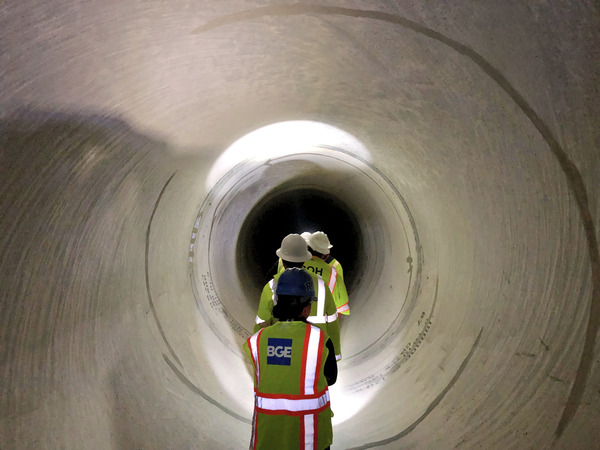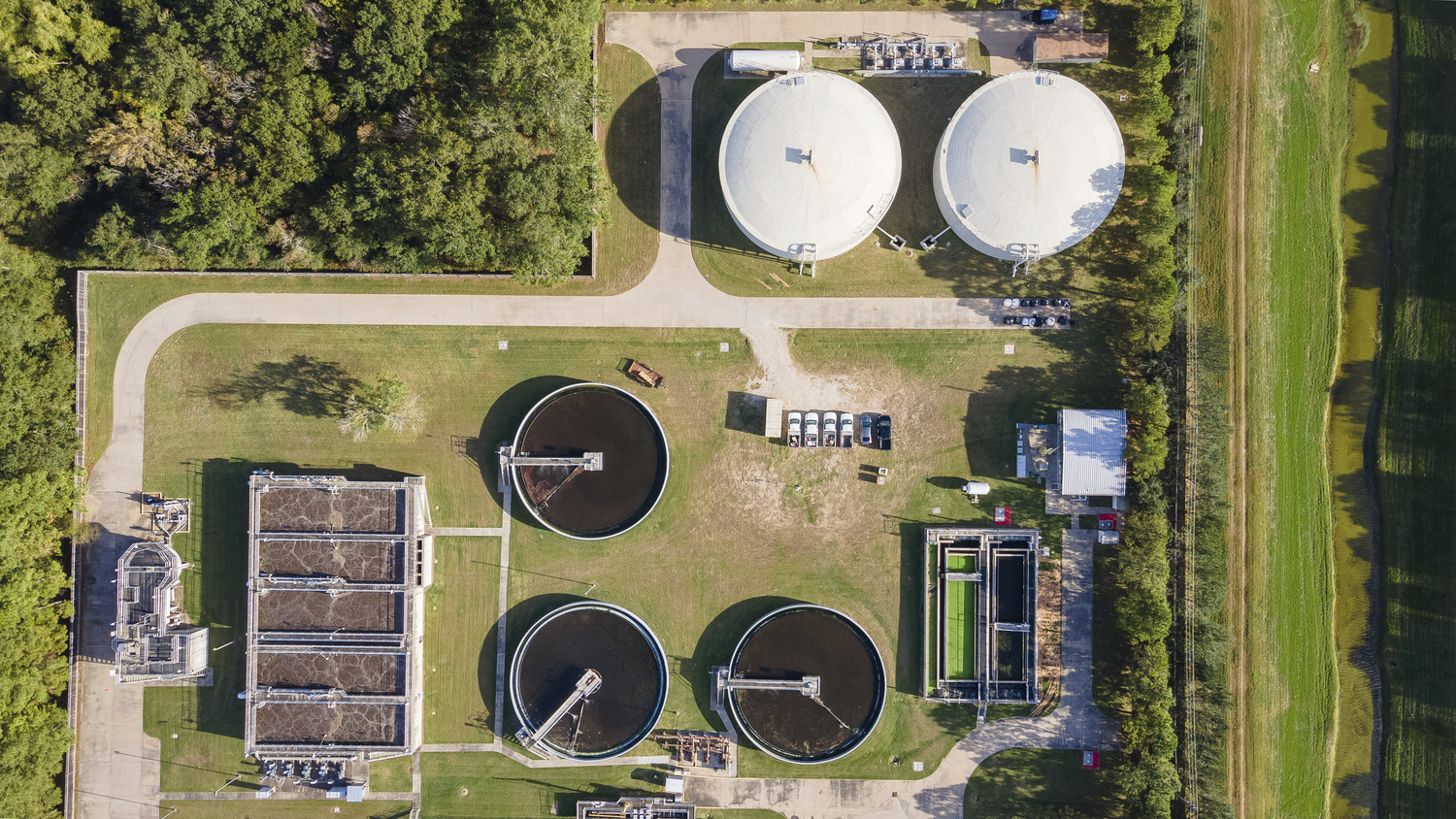BGE Expert Voices
As Texas communities continue to grow and climate challenges intensify, water professionals across the state are reimagining the way we plan, manage, and invest in infrastructure. At the forefront are teams like BGE’s, who are pioneering innovative strategies for reuse, resilience, and smart infrastructure to ensure a water-secure future.
Below, BGE experts share how they’re tackling some of the most pressing issues in water and wastewater management — from reuse and asset planning to stormwater engineering and groundwater improvements.
Reuse Revolution: Smart Wastewater Solution to Conserve Groundwater
Insights from Kate Hallaway, Sr. Project Manager, Public Works

Water reuse is more than a trend — it’s becoming essential. In West Houston, Kate Hallaway, senior project manager at BGE, is leading efforts to help local utility districts conserve groundwater and reduce reliance on traditional water sources.
Working with Cinco MUD No. 1, Hallaway helped engineer a first-of-its-kind facility that reclaims treated effluent from the Cinco Regional Wastewater Treatment Plant and repurposes it to irrigate greenbelts and recreational areas. This system is projected to save 292 million gallons of potable water annually and reduce costs by $2 million each year.
As part of the overall Cinco MUD 1 reuse strategy led by BGE, this project also introduced microfiltration and reverse osmosis technologies and marked the first use of brackish groundwater desalination in Fort Bend County — aligning with Texas’s broader strategy to diversify water sources.
By repurposing treated water, we’re not only reducing groundwater drawdown but helping communities meet regulatory goals while keeping public spaces green.
Kate Hallaway
Sr. Project Manager, Public Works
As the project’s infrastructure solutions provider, BGE recently won a Gold Medal from the American Council of Engineering Companies (ACEC) – Texas Chapter recognizing the firm’s technical innovation. BGE continues to work alongside the MUD to improve community water resource use in compliance with the Fort Bend Subsidence District’s mandate to reduce groundwater usage by 60% in 2025.
Technology Innovation: Enhancing CIP Planning with GIS and AI Automation
Insights from Michael Thibodaux, GISP, GIS Director, Information Technology

Smart infrastructure starts with smart planning. BGE’s GIS Manager Michael Thibodaux, in collaboration with Satish Tripathi from the City of Houston, developed a proprietary automation tool that streamlines the identification of infrastructure improvement needs by integrating multiple data sources, including GIS information, spreadsheet data, IoT sensors, and AI-based failure prediction models.
The automation system performs three critical functions:
- Evaluates all main lines using multiple criteria to assign criticality ratings.
- Validates rankings by comparing them with AI-based failure prediction models.
- Groups water mains into logical “projects,” creating proposed CIP boundaries.
In a city that treats nearly half a billion gallons of water daily, this ‘Smart’ Capital Improvement Project (sCIP) planning automation tool cuts hours of manual work by helping engineers evaluate water lines, predict failures, and adjust priorities in real time.
We’re putting engineers in control. Now they can test planning scenarios instantly and see how small changes affect long-term budgets and infrastructure needs.
Michael Thibodaux, GISP
GIS Director, Information Technology
“This is about using today’s technology to prevent tomorrow’s water loss — billions of gallons worth,” Tripathi added. “As new residents and new assets like data centers require more water, engineers must look to apply the latest tools that enhance their areas of expertise and help them keep pace with increasing demands.”
Building Resilience with Water Well Improvements in Houston
Insights from Lizanne Douglas, PE, Senior Project Manager, Public Works

Houston’s water system includes dozens of wells, many over 30 years old. Upgrading them all at once required coordination, precision, and resilience.
Since 2015, BGE professionals have collaborated with the City of Houston to continually upgrade the city’s water infrastructure. The significance of this decade-long initiative is that it was the first time the city had tackled so many sites in a single capital improvement project,
Project Manager Lizanne Douglas worked alongside Tina Yao, PE, supervising engineer for capital projects at the City of Houston and manager of all the city’s groundwater plants to lead a massive initiative to modernize 61 well sites.
This wasn’t your average design and construction project. It required forging meaningful connections through communication and teamwork between two city departments, the engineering company, and an in-house crew of varied professionals over many years, which allowed us to make an extensive upgrade without delays and ensure water was available to numerous residents.
Lizanne Douglas, PE
SR. Project Manager, Public Works
The project was strategically divided into three packages of approximately 20 sites each, with improvements ranging from basic fencing and gate repairs to complex mechanical and electrical system replacements. Following Hurricane Harvey, the design team also incorporated enhanced drainage requirements to improve resilience against future flooding events.
Navigating Water Transmission Line Development in Central Texas
Insights from Daniel LaCour, PE, EIT Engineer, Public Works, and Brian Rice, PE, Director, Public Works


As Central Texas cities like Kyle and Buda grow, so does the need for reliable water transmission. BGE engineers Daniel LaCour and Brian Rice partnered with the Alliance Regional Water Authority (ARWA) to design a 22-mile treated water pipeline — a critical link between rural water sources and fast-growing suburbs.
Spanning over 100 properties and cutting through a mix of farmland, urban development, and commercial land, the project required creative routing, complex permitting, and constant adaptation to a shifting real estate landscape.
Graham Moore, executive director of ARWA, provided insights into ARWA’s challenges of meeting the needs of the agency users and property owners, including:
- Adapting to dramatically changing land use and costs from 2018-2023;
- Balancing construction costs with land acquisition expenses;
- Working with landowners, developers, utilities, and adjacent agencies to identify and support each other’s needs and goals; and
- Managing complex permitting and condemnation processes.
This project taught us the value of proactive collaboration — working with developers, agencies, and property owners to align interests and minimize disruptions.
Daniel LaCour, PE, EIT
Engineer, Public Works
BGE’s own Daniel LaCour, the pipeline’s primary design engineer, and Brian Rice, PE, director of public works for BGE, highlighted the project’s complexity to develop this critical water infrastructure.
From Roadway to River: Advanced Engineering Reinforces Austin Water Infrastructure
Insights from Lizzie Francis, PE, Engineer, Public Works & Makenzie Davis, PE, Project Manager, Public Works


What happens when a major highway project disrupts natural watershed flows? In Austin, engineers had to find out — and fix it.
“The I-35 Capital Expressway Project aims to enhance the infrastructure and traffic flow of one of the most critical thoroughfares in Austin,” said Francis.
A project of this scale necessitated using advanced CFD and physical modeling to create a solution for optimizing hydraulic performance in complex water systems.
Makenzie Davis, PE
Project Manager, Public Works
The project required innovative drainage solutions due to the lowering of main travel lanes, which disrupted natural watershed flows. Engineers designed a deep drainage tunnel system (80-200 feet deep, 22 feet in diameter) extending six miles along I-35 and Cesar Chavez Boulevard to collect stormwater runoff. The system discharges to a pump station featuring six mechanically cleaned trash rakes, four concrete volute pumps, and sophisticated control structures.
Leveraging a combination of digital and physical modeling to validate these design decisions, BGE’s Austin team created six CFD models and multiple physical models to simulate various aspects of the system, including:
- Vortex drop structures performance;
- Intake structure flow patterns;
- Pump station hydraulics;
- Discharge structure operation; and
- Colorado River outfall impact.
This award-winning project demonstrated how relatively modest investments in advanced modeling (less than 0.5% of total construction costs) can substantially improve design efficiency, operational performance, and long-term reliability of critical water infrastructure in regional hotspots.
Leading the Way to a Water-Secure Future
From water reuse partnerships and digital transformation initiatives to large-scale capital infrastructure projects and advanced engineering techniques, the water and wastewater industry is progressing with remarkable resilience. These solutions aren’t just technically advanced — they’re rooted in collaboration, community, and long-term vision.
As water utilities, cities, and districts look ahead, BGE’s expert-led projects offer a roadmap for sustainable water infrastructure that meets today’s demands while preparing for tomorrow’s, strengthening both water systems and communities for the next generation.
About BGE, Inc.
For 50 years, BGE, Inc. has served public and private clients as a full-service, multidiscipline engineering consulting firm with integrated capabilities. BGE delivers a broad range of advisory services, technical expertise and innovative, sustainable solutions to support local, regional and national communities as they shape the future of infrastructure. Backed by five decades of civil engineering leadership, BGE helps our client partners solve their most critical challenges Explore our consulting services and solutions: https://www.bgeinc.com/




